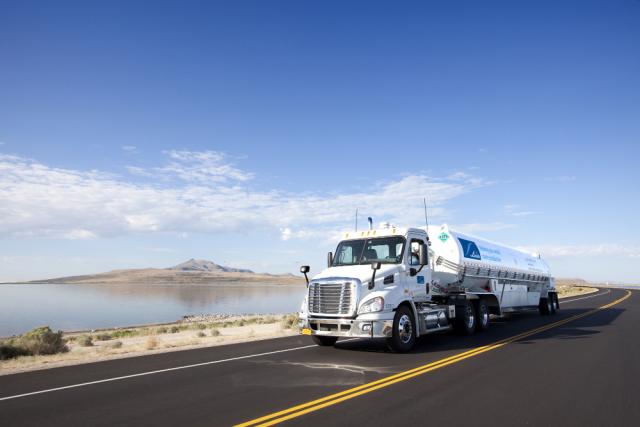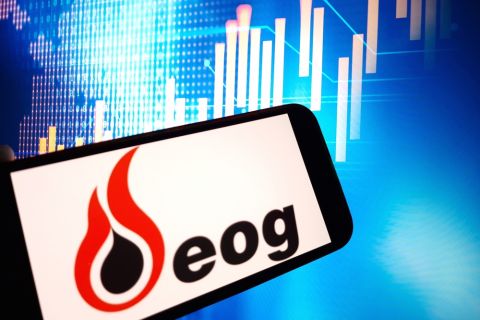
A Linde bulk trailer truck delivers liquefied gases. The company has partnered with OCI to produce hydrogen for a large-scale ammonia project. (Source: Linde)
Industrial gases company Linde said Feb. 6 it plans to invest $1.8 billion to supply clean hydrogen to Dutch fertilizer giant OCI NV, the company responsible for developing what is being called the largest blue ammonia facility of its kind in Texas.
Headquartered in the U.K., Linde said it will integrate a new complex into its existing Gulf Coast gas infrastructure. The complex will include autothermal reforming with carbon capture, sequestering more than 1.7 million metric tons of CO2 emissions each year, plus a large air separation plant.
“Linde’s capabilities are already enabling the transition to a low-carbon-intensity economy,” said Linde CEO Sanjiv Lamba. “Our strategy is to support decarbonization by working with off-takers like OCI to safely and reliably supply low-carbon industrial gases at scale.”
As part of a long-term agreement, Linde will supply the hydrogen to OCI, which will upgrade it to produce blue ammonia at its 1.1 million tonnes per annum facility in Beaumont, Texas. OCI broke ground on the facility in December and plans to begin operations in 2025.
The partnership formed as the world turns to low-carbon sources to meet energy needs and reduce emissions to slow global warming. Ammonia production represents about 15% to 20% of CO2 emissions from the chemical sector, according to the International Renewable Energy Agency. However, low-carbon ammonia production methods—such as using blue hydrogen—can reduce emissions.
While mostly used today to produce fertilizer, ammonia is also seen as a potential hydrogen carrier and a fuel for hard-to-abate sectors.
OCI plans to invest up to $1 billion on its blue ammonia facility, which is being built adjacent to its existing integrated 1.4 million metric tons per year methanol-ammonia production facility in Beaumont and 1.8 million metric tons per year 50%-owned methanol joint venture Natgasoline.
“The Beaumont facility will allow us to build and strengthen our world-leading blue ammonia and clean fuels platform, supplying both the U.S. and export market with blue ammonia, an ideal solution to decarbonize hard-to-abate sectors such as agriculture, power and marine fuels at a competitive cost,” said OCI CEO Ahmed El-Hoshy. “Linde’s expertise in managing large-scale and complex engineering projects and safely and reliably delivering industrial gases made it a solid choice as a partner for this project.”
Linde said it will also use its pipeline network to provide clean hydrogen to existing and new customers in the Gulf Coast area looking to decarbonize their operations while also supplying atmospheric and rare gases.
Linde credited the U.S. Inflation Reduction Act (IRA) to helping position the company to secure more clean energy projects. Signed into law in 2022, the IRA includes nearly $370 billion in incentives for clean energy and climate-related spending. Hydrogen incentives in the IRA include a 10-year production tax credit with a maximum value of $3/kg for hydrogen produced with nearly no emissions.
The law also incentivizes carbon sequestration, which is used for blue hydrogen. It provides a tax credit of $85/ton for sequestering CO₂ produced by industrial activity, up from $50/ton. It also adds a tax credit of $180/ton for direct air capture.
Recommended Reading
ConocoPhillips EVP of Strategy, Sustainability, Technology Macklon to Retire
2024-02-16 - Dominic Macklon, who began his career with Conoco in 1991, is set to retire ConocoPhillips May 1.
BP Restructures, Reduces Executive Team to 10
2024-04-18 - BP said the organizational changes will reduce duplication and reporting line complexity.
The One Where EOG’s Stock Tanked
2024-02-23 - A rare earnings miss pushed the wildcatter’s stock down as much as 6%, while larger and smaller peers’ share prices were mostly unchanged. One analyst asked if EOG is like Narcissus.
Chord Energy Updates Executive Leadership Team
2024-03-07 - Chord Energy announced Michael Lou, Shannon Kinney and Richard Robuck have all been promoted to executive vice president, among other positions.
Bobby Tudor on Capital Access and Oil, Gas Participation in the Energy Transition
2024-04-05 - Bobby Tudor, the founder and CEO of Artemis Energy Partners, says while public companies are generating cash, private equity firms in the upstream business are facing more difficulties raising new funds, in this Hart Energy Exclusive interview.






